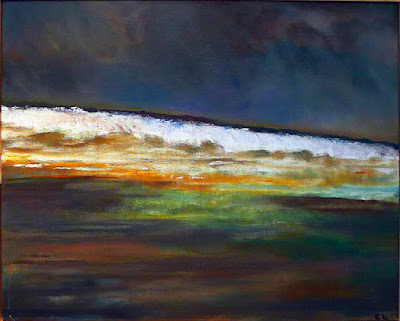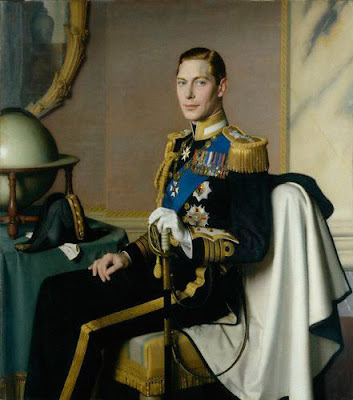Feeling out of place, like a failure? Perhaps the problem isn’t you, but your tribe.
 |
|
Five Chairs, by Pamela Hetherly, courtesy of Kelpie Gallery. This painting stopped me yesterday. The color is beautifully integrated, something that’s lost in the photo.
|
I spent a few hours yesterday at the Kelpie Gallery in S. Thomaston. I’d meant to drop paintings off and leave, but it is a very restful place with a clean, open atmosphere. I always spend more time there than I expect to. Susan Lewis Baines, the owner, is so interesting and interested that before you know it, the day is half over.
It’s an airy, light space with grey walls, a grey tiled floor and lots of white trim. What little furniture there is, is elegant and subservient to the art. I look at Sue’s handmade desk (no, it’s not for sale) and wonder if I need one like it. Then I remember that I live in an old farmhouse and it wouldn’t match at all. As a decorator, Sue is light years ahead of me. That’s a great quality in a gallerist.
 |
|
Sometimes I See, by Kay Sullivan, courtesy of the artist. Kay’s works are small, active, and yet somehow peaceful.
|
She represents a small stable of painters. These include vibrant small pastels by
Kay Sullivan, the austere abstractions of
Ann Sklar, mystical landscapes of
Julie Haskell and
Beth London, moody interiors by
Pamela Hetherly, and the idiosyncratic landscapes of the late
Erik Lundin. On first glance, the work is widely disparate. but the visitor notices that they all hang together well. They are united by a common color sensibility and composition. That makes it possible for high realism to hang side-by-side with abstraction and have the combination complement both paintings.
As different as the paintings are, there’s definitely a group norm at work, and it’s bound to provoke a response from the visitor.
 |
|
A crow painting by Beth London, available through the Kelpie Gallery.
|
I tell people I left New York because I can’t paint like a
Hudson River Schoolpainter. It is a continuous tradition in New York, dating back two hundred years. In any other place, painting with that golden light and attention to detail would be an annoying affectation. But in New York, it has some wonderful modern practitioners, including
Tarryl Gabeland
Patrick McPhee.
 |
|
Untitled, by Erik Lundin. Courtesy of the Kelpie Gallery. His disinterest in selling made him the most unaffected of painters.
|
I don’t feel things in that way. I’m thoroughly the product of my time, which means less value modeling and more color and brushwork. As long as I stayed in New York, I was subtly pushed toward painting a different way. Galleries liked it, jurors liked it. And I found it personally disheartening. I needed to seek out my own tribe. I did that by going on the road, and later by moving to Maine.*
This is where a good knowledge of art history proves useful. It allows you to see over the lip of the basket you live in, to see where you fit in the greater scheme of things. I like the basket I have moved to, but if I felt confined in it, I’d be exploring other places and other representation.
————————
*An exception to this is
Adirondack Plein Air, which is not style-driven. In fact, I find this true of
plein air events in general. They usually attract a much wider variety of painters than from the local catchment area.










